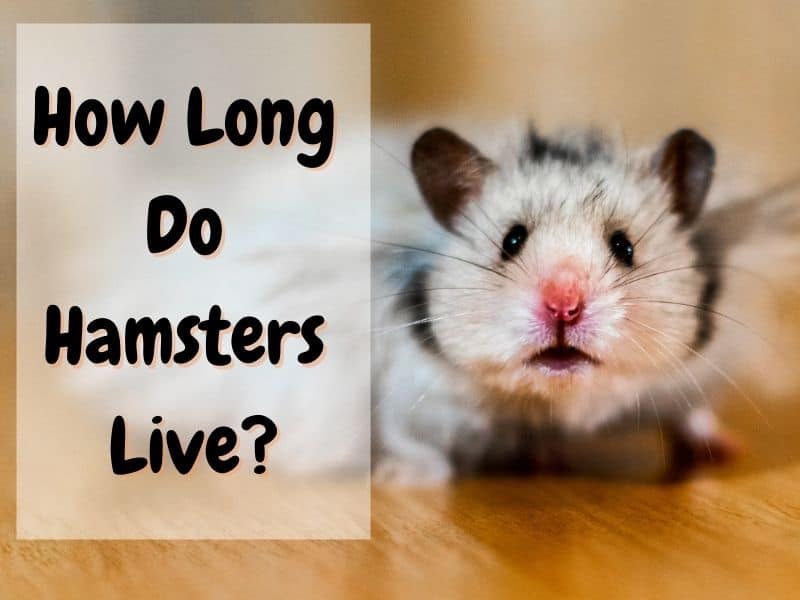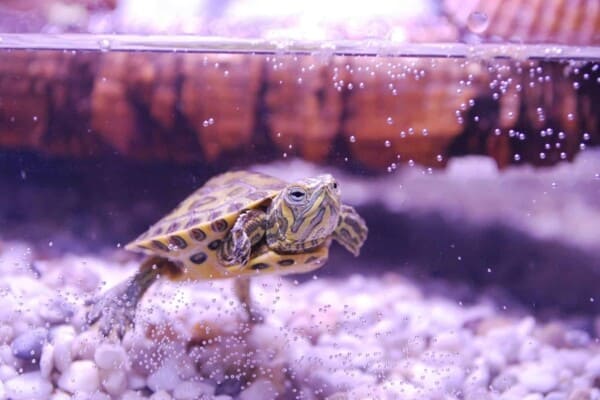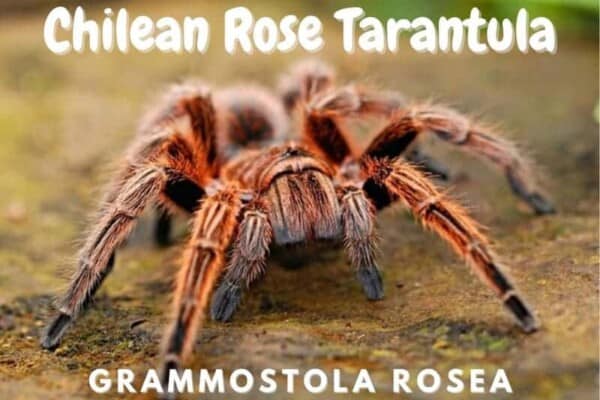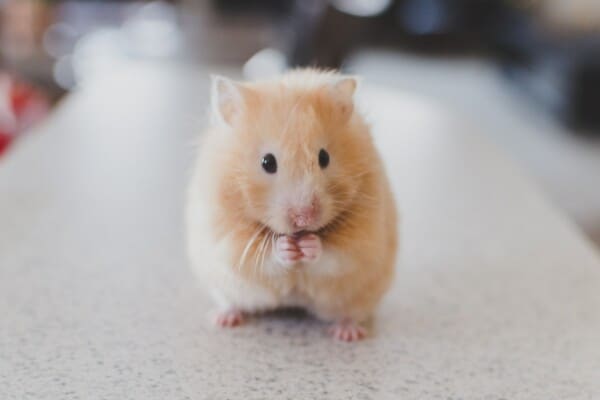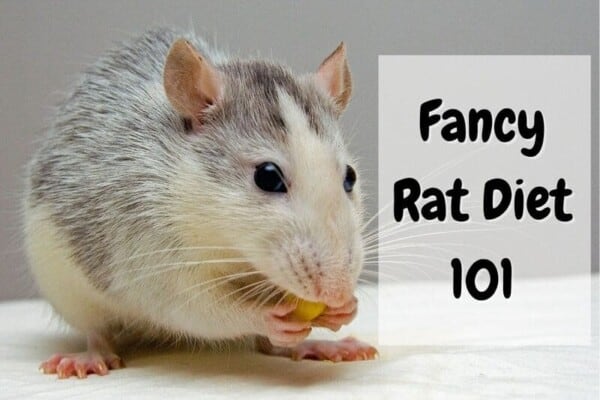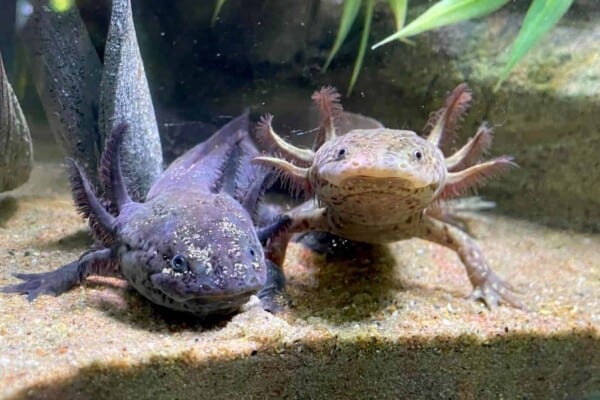If you start to look into how long hamsters live, you will actually find a lot of conflicting answers. Some people claim that the average is closer to just one year, while others claim their hamsters live up to five or even six years. However, the average for most hamster breeds is somewhere between 2 and 3 years, with a couple of breeds having slightly longer lifespans. The breed with the longest average life span is the Roborovski Dwarf hamster, and the breed with the shortest is the Chinese dwarf.
Even knowing their average life span, your hamster could surprise you. Some hamsters live for significantly less time due to health problems or genetics, and some seem to live for substantially longer. In the rest of this article, we will take a deeper look at what you need to know about your hamster’s life span and life cycle before you bring him home.
How Long Does Each Hamster Breed Live?
When looking at pet hamster breeds, you can break them down into two main categories: Syrian hamsters and Dwarf hamsters. Both breeds come with their own unique pros and cons that can affect their lifespan. For instance, dwarf hamsters are much more likely to develop diabetes, but Syrian hamsters are more likely to develop wet-tail.
Let’s take a deeper look at the different breeds and the average hamster lifespan for each breed.
Syrian Hamster: 2-3 Years
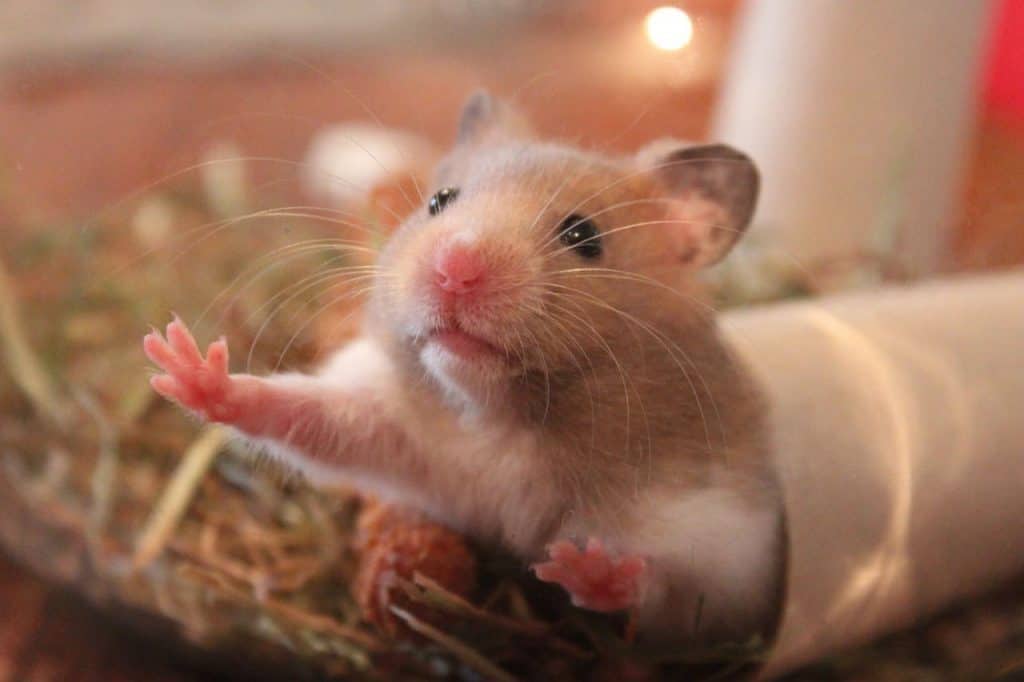
Currently, the average lifespan for Syrian hamsters seems to be around three years; however, when you hear about people’s hamsters living well beyond the average life expectancy, it is often a Syrian hamster. There are people who report their Syrian hamsters living up to five or even six years. However, the longest-living Syrian hamster on record lived to be 3.9 years old.
Chinese Dwarf Hamsters: 2 Years or Less
Chinese hamsters are also called striped hamsters, and they are actually not true dwarf hamsters, but they have gotten the name anyways because of how small they are. This is the breed that tends to have the shortest life span, only living about two years or slightly less on average. However, even though the Chinese Hamster breed does tend to have a relatively short lifespan, there are still outliers. Make sure you check out later sections in this article to learn some tips about how to keep your hamster alive for longer.
Campbell Dwarf Hamster: 2 Years
Campbell dwarf hamsters are a small, round breed that, believe it or not, has nothing to do with the Campbell soup brand. Instead, these hamsters were named after Charles William Campbell, who was the first to collect a hamster specimen of this breed. If you decide to get a hamster of this breed, you can expect that it will live for an average of 2 years.
Winter White Russian Dwarf Hamster: 2 Years
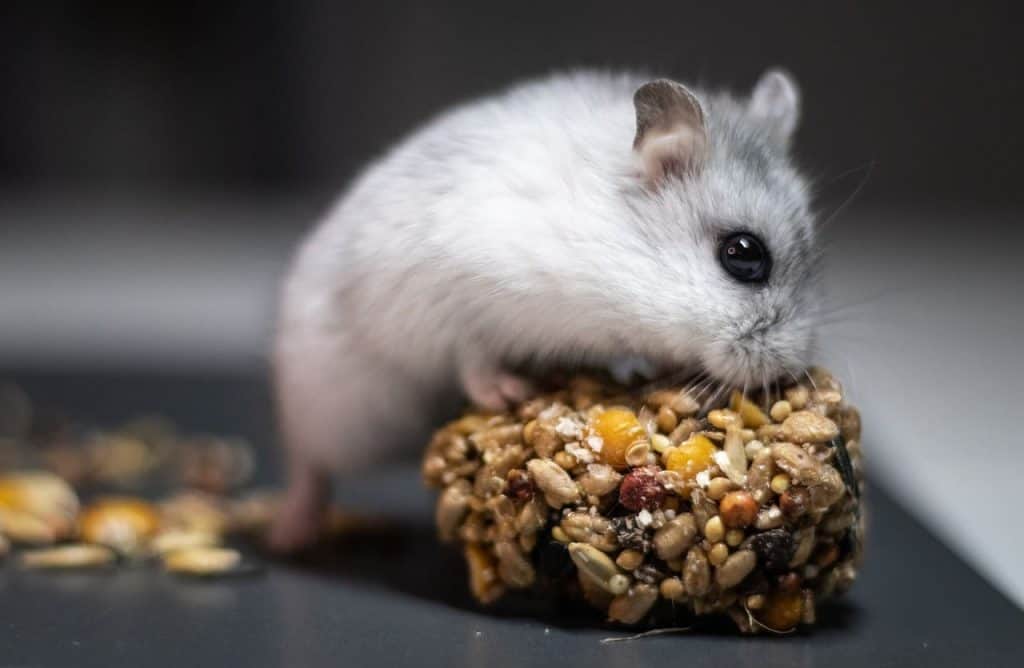
This breed of dwarf hamster is actually very similar to the Campbell dwarf hamster, and many people actually combine them into one Russian dwarf hamster breed, so, as you may have expected, they have similar life spans. The winter white Russian dwarf hamsters tend to live for approximately 2 years in captivity.
Roborovski Hamster: 2-4 Years
If you are looking for the hamster breed that will live the longest, you are going to want to get the Roborovski hamster. This breed tends to live up to four years in captivity, almost double some other hamster breeds. However, this does not mean that every single Roborovski hamster will live this long. Just like there are some Chinese hamsters that live well over 3 years, there are some Roborovski hamsters that live less than two.
What Are The Stages of a Hamster’s Life?
Newborns
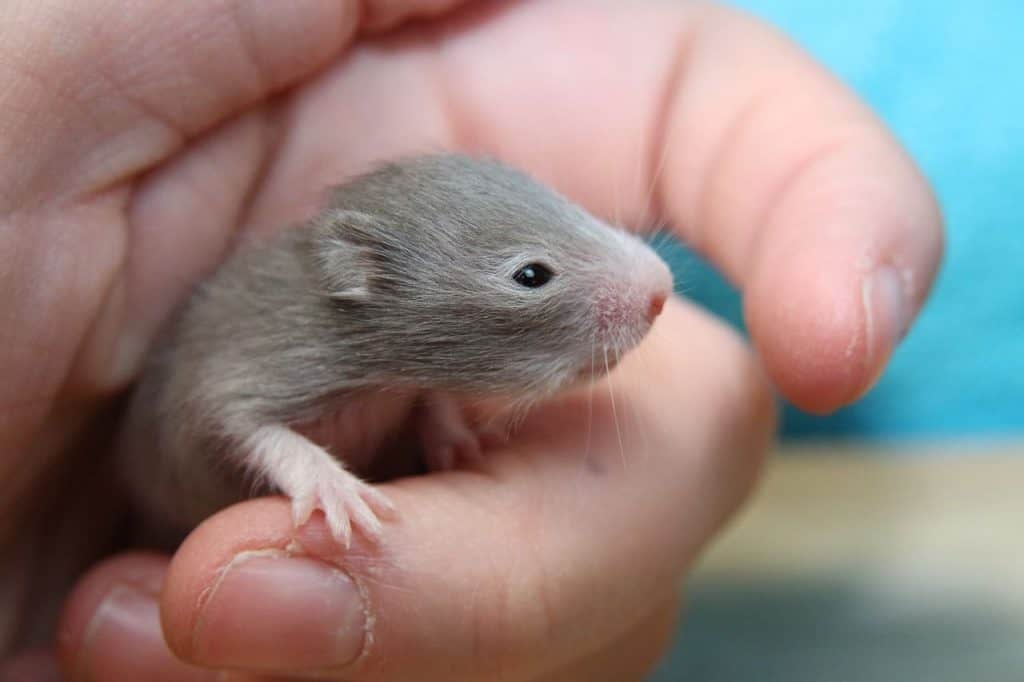
The first stage of the hamster life cycle is the newborn/baby stage. The young hamster is called a pup during this stage, and it tends to last from birth to about six weeks. This might not feel very long, but when you take into account their comparatively short lifespan, it does make more sense.
At the beginning of a hamster’s life, they are entirely dependent on their mother for survival. For the first two weeks, baby hamsters are pretty much entirely blind and cannot move around very well. They are also completely hairless when they are born, but the coat comes in pretty quickly after the first week. Around week one, they also start to grow in their teeth.
Starting at about week two, when hamsters are beginning to have more of their senses and can move on their own, it is best to start handling them so they can be socialized to human interaction. If you do not socialize with a hamster while young, it will be significantly harder to do so later on.
At around week five, young hamsters actually need to be removed from their mother’s cage. Hamsters tend to not get along with each other, and after this point, the mother may actually end up fighting with or killing her young.
Adulthood
Hamsters tend to reach sexual maturity at around 6 weeks, hence the seemingly large jump from the newborn stage all the way into the adult stage. Adult hamsters are very active and curious creatures, and they really do make fun pets. Common behaviors that you might notice in your adult hamsters are running, burrowing, and creating food stashes around their cage (you will want to make sure to find these so they do not grow mold and bacteria.)
Mothers are capable of giving birth starting at around 10 weeks. Once a hamster is pregnant, its gestational period is only about one month. If you are breeding your hamsters, the litter size will depend on the breed and health of your hamster, but the average size seems to be about six pups. Remember, you should only be breeding hamsters if you are experienced and educated in the process.
Senior
After your hamster reaches about 1 year old, he would be considered a senior hamster. Many hamsters in the wild actually never reach this stage. Mother hamsters should stop giving birth around this time (definitely by a year and a half) because the strain of childbirth could hurt their body and, specifically, their hips.
Now, just because your hamster is a senior does not mean he will stop being active and curious about the world around him. In fact, senior pet hamsters are often quite active, though they may run on their wheel or climb a little bit less. However, your senior hamster will spend more time sleeping than doing anything else. Because of this, you want to make sure that you provide your senior hamster with lots of bedding and comfortable places to hide and sleep.
How To Ensure Your Pet Hamster Lives a Long and Happy Life
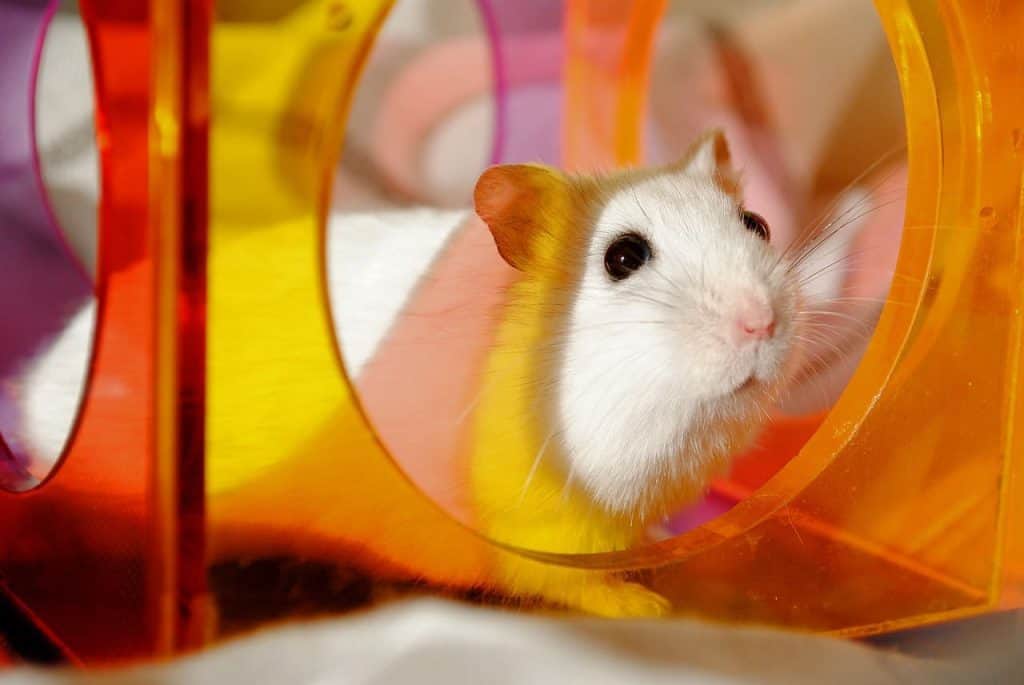
Many different factors affect how long your hamster will live. Some, like the species of your hamster, you have no control over. If you buy a Chinese dwarf hamster, you can not somehow make it have the lifespan of a Syrian hamster. Other factors that affect how long your hamster will live, like the type of diet that your hamster has or his living environment, are under your control. In this section, we will take a look at them all.
Factors Affecting Hamster Lifespan You Can Not Control
Let’s start with the factor that we have already covered, for the most part, your hamster’s species. In the previous section, we went over how different hamster breeds have different average lifespans. This is something that you definitely want to take into consideration when you are trying to figure out what kind of hamster you want to bring home.
If you are not wanting to make a very long commitment right now, you might want to consider getting a breed like the Chinese dwarf hamster. On the other hand, if you are hoping your hamster will be with you for as long as a hamster could possibly live, you might want to consider a breed like the Roborovski hamster. Nevertheless, it is important to keep in mind that picking a certain breed does not guarantee a specific time commitment due to the wide range of other factors that can affect your hamster’s life span.
Another factor that you cannot control is your hamster’s genetic makeup. The genetic makeup of your hamster is all the traits that your hamster inherits from his parents. This can include things that affect his personality, looks, and even his life span. For instance, some hamsters’ genetic makeup predisposes them to certain respiratory diseases or even diabetes.
You do not have control over the genetic makeup of your hamster; however, there are some things that you can do to help ensure that you are getting a hamster from a healthier bloodline. Try looking for a breeder that you can buy directly from rather than a pet store because the breeder will usually be able to provide you with more information about the hamster’s parents and possible genetics. When you go to adopt a hamster, ask to see any documentation they have about your hamster and his parents.
Factors You Can Control
Now let’s take a look at the factors that affect your hamster’s life span that you can control so you can keep your beloved furry friend healthy and happy for as long as possible.
1. Diet
The first main factor that can seriously affect how long your hamster will live is his diet. You need to make sure that the hamster food that you give to your furry pet is high-quality food and that any extra treats that you are offering are completely safe for hamsters. This is because if you give your hamster an unhealthy food mix, your hamster could become obese, develop diabetes, or deal with a number of other major health issues.
Also, keep in mind that hamsters are small and do not need to eat a whole lot. Too much food can lead to health problems, just like not giving your hamster enough can be dangerous. Generally speaking, Syrian hamsters need about 2 teaspoons a day of food, and Dwarf hamsters need about one, but your vet should be able to make specific recommendations based on your hamster and the kind of food you feed him.
2. Exercise
The next factor that you control, at least in part, is exercise. Like humans and many other animals, pet hamsters need to exercise regularly to remain healthy. Yes, your hamster can just scurry around his enclosure, but in the wild, hamsters run for miles on end, so the enclosure alone does not typically offer enough space. In order to encourage your hamster to get enough exercise, offer him things like a running wheel and climbing toys or allow him to explore a safe, enclosed area outside of his cage.
3. Hygiene
You also need to make sure that you provide your hamster with a clean and safe living environment. If you do not regularly clean out your hamster’s cage, bacteria could start to grow, which could make your hamster sick. Additionally, there are some measures that you need to take beyond just cleaning to ensure that the enclosure is hamster safe. For instance, you need to make sure that the bedding that you use will not cause a respiratory problem. Any bedding that is high in dust could cause your hamster to develop some pretty severe respiratory diseases.
4. Stress Level
Finally, you want to avoid making your hamster overly stressed. This includes making sure that your hamster’s cage is big enough, only handling him if he likes to be picked up and played with, placing him in a place that is not overly noisy, and making sure that the temperature is well-regulated between 68 and 75 degrees Fahrenheit. All of these things will help your hamster feel less stressed and happier. Less stressed pet hamsters tend to live longer, healthier lives.
How to Avoid Hamster Accidents
One of the most common reasons that a hamster may pass prematurely is because of an accident. Accidents include things like a hamster getting stepped on, a child caring for a hamster incorrectly, or you accidentally letting other pets in while your hamster is out. The best way to ensure that your hamster lives for as long as possible is to put measures into place that avoids said accidents.
If you have children, one preventative measure you might want to take is putting boundaries in place around hamster care. Make it clear to your children (especially any young children) that they are not allowed to handle or care for the hamster if you are not there with them. It can be especially helpful to put a lock on the hamster’s cage and/or put the cage up someplace where your children cannot reach it.
You also want to make sure you communicate clearly to everyone else in the household whenever you decide to take your hamster out of the enclosure. This ensures that everyone knows that he is out on the ground and not to let any other animals into the room. You also need to make sure that the area you are allowing your hamster to explore is completely enclosed, and clear of extra clutter, and that you are constantly supervising the hamster. If you have to go someplace else, put the hamster back in his enclosure.
How Long Do Hamsters Live In The Wild?
A hamster’s lifespan is significantly shorter in the wild than in captivity. Most hamsters in the wild only live to be about 1 year old, and many do not even make it to that first birthday.
In the wild, hamsters typically live in warm, dry climates, so you can find them in places like the Middle East, China, Mongolia, and Greece. Additionally, wild hamsters are dwindling in numbers, and some breeds are even considered to be endangered due to all the dangers that hamsters face in the wild such as predators and weather conditions.
How Long Do Hamsters Live With a Tumor?
The exact answer to this depends on the type of tumor that your hamster has and where it is on his body, so you will need to see a vet to know before as well as to find out what sort of medical action you may need to take. However, there are some tumors that your hamster could live a long life with.
For instance, if your hamster develops a small benign, fatty tumor, there is a good chance it will not ever affect your hamster’s overall health. On the other hand, if your hamster develops a tumor in his brain or another organ, it could mean that your hamster only has a short time left.
How is a Hamster’s Lifespan Compared to That of Mice, Rats, Gerbils, and Guinea Pigs?
Hamsters are on the relatively short end when it comes to lifespans; however, it is comparable to some other animals like most rat breeds and gerbil breeds. On the other hand, Guinea pigs tend to live a little longer, with an average lifespan somewhere between 4 and 8 years, and some breeds of mice will live between 5-7 years. When looking at these different animals, it is really best to look at specific breeds, not just the overarching specie’s average lifespan.
Related articles
References and further reading
- Nutritional effects on the lifespan of Syrian hamsters, Diane F. Birt, Sheila M. Higginbotham, Kashinath Patil & Parviz Pour
- Hibernation and Longevity in the Turkish Hamster Mesocricetus brandti, CHARLES P. LYMANREGINA C. O’BRIENG. CLIETT GREENE AND ELAINE D. PAPAFRANGOS
- Miedel, E., VMD; Hankenson, F.C., DVM. “Biology and Diseases of Hamsters.” Laboratory Animal Medicine, 2015
- Kirkwood, T. B. L., et al (2000). “Evolution, stress, and longevity,” Journal of Anatomy, Vol. 197.
- Pitts, J. (2017), “Dwarf hamsters – how long do they live,” Health Guidance.
Contents
- How Long Does Each Hamster Breed Live?
- What Are The Stages of a Hamster’s Life?
- How To Ensure Your Pet Hamster Lives a Long and Happy Life
- How to Avoid Hamster Accidents
- How Long Do Hamsters Live In The Wild?
- How Long Do Hamsters Live With a Tumor?
- How is a Hamster’s Lifespan Compared to That of Mice, Rats, Gerbils, and Guinea Pigs?

